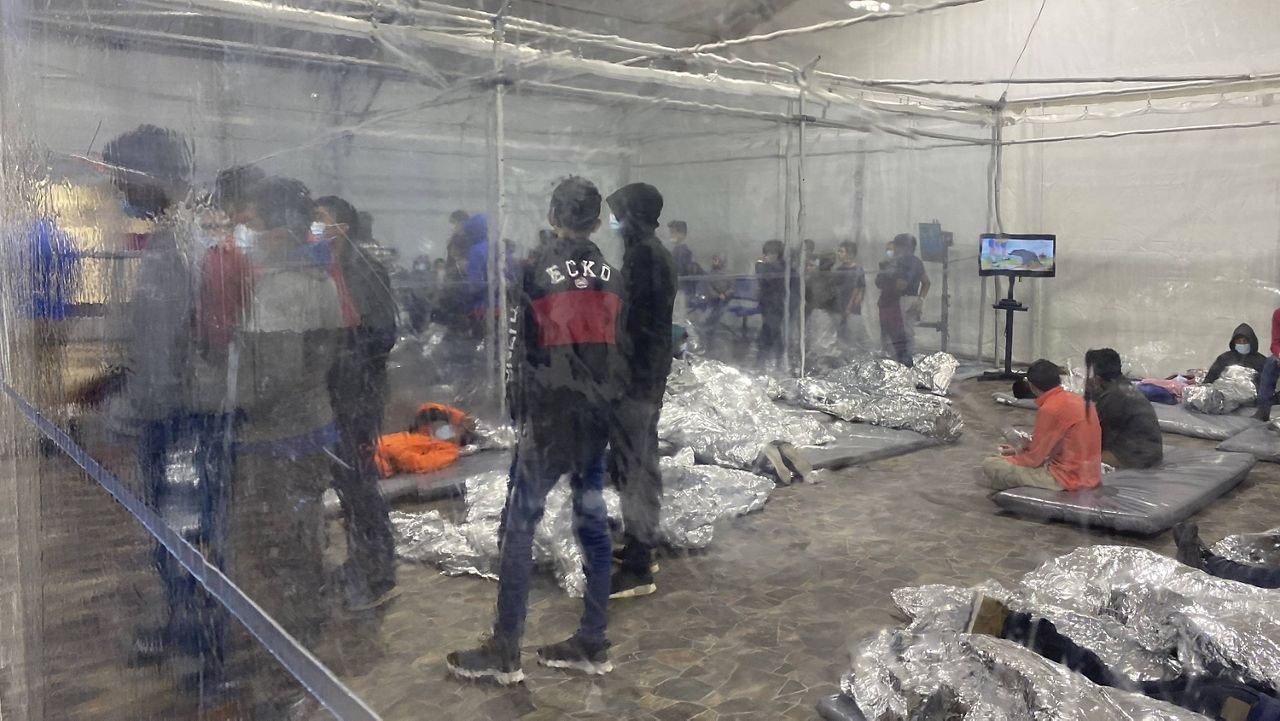Photos from inside a Customs and Border Protection overflow facility in Donna, Texas, show migrant children crowding together and sleeping on mats on floors underneath thermal blankets that resemble tin foil.
What You Need To Know
- Rep. Henry Cuellar has shared photos from inside a Customs and Border Protection overflow facility in Donna, Texas, this past weekend
- The photos show migrant children crowding together and sleeping on mats on floors underneath thermal blankets that resemble tin foil
- Cuellar described the situation as "terrible conditions for the children" and said the minors need to be moved more quickly into the care of the Department of Health and Human Services
- Also Monday, the White House provided details about a U.S. media campaign aimed at deterring migrants from heading north
The images were shared with Axios by Rep. Henry Cuellar (D-TX). According to Cuellar, the facility was divided into eight “pods” with each having a 260-person occupancy, although he said one held more than 400 male minors as of Sunday.
Cuellar did not personally visit the Donna facility. He said the photos were taken over the weekend and that he shared them to raise awareness about the situation, which he described as "terrible conditions for the children."
The Texas Democrat said the minors need to be moved more quickly into the care of the Department of Health and Human Services, adding that Border Patrol agents are “not equipped to care for kids.”
"We have to stop kids and families from making the dangerous trek across Mexico to come to the United States,” Cuellar told Axios. “We have to work with Mexico and Central American countries to have them apply for asylum in their countries."
The Biden administration has come under fire for not allowing press access to facilities housing minors. The White House says it expects to announce a plan for providing access soon.
The government has resisted calling the surge of unaccompanied minors at the border a “crisis,” but it is a problem officials are scrambling to manage, in part by opening new facilities, such as the one in Donna.
As of Saturday, the number of minors in U.S. custody had surpassed 15,000, CBS News reported. Customs and Border Protection is supposed to within 72 hours turn the children over to HHS, which then tries to place each minor with a sponsor in the U.S., generally a relative, while they await their asylum hearing. But the sheer volume of cases is forcing the government to miss the 72-hour deadline, leaving children in jail-like settings for several days.
“I will say that these photos show what we've long been saying, which is that the these Border Patrol facilities are not places made for children,” White House press secretary Jen Psaki said Monday. “They are not places that we want children to be staying for an extended period of time. Our alternative is to send children back on this treacherous journey. That is not, in our view, the right choice to make.”
Psaki said the Biden administration is working to expedite processing minors at the border, opening up additional facilities and restarting a program discontinued by the Trump administration that allows minors to apply for asylum from their home countries.
“Children presenting at our border who are fleeing violence, who are fleeing prosecution, who are fleeing terrible situations is not a crisis,” she said. “We feel that it is our responsibility to humanely approach this circumstance and make sure they are treated and put into conditions that are safe.”
The Biden administration has consistently tried to convey that now is not the time for migrants to head for the U.S. Despite that, Homeland Security Secretary Alejandro Mayorkas said last week the U.S. is on pace to see more migrants at the southwest border than it has in 20 years. The majority are being turned away, although unaccompanied children are being processed.
At Monday’s White House press briefing, Psaki went into detail about the media campaign the State Department has launched to try to deter would-be migrants from heading north. It includes:
Radio ads in Brazil, El Salvador, Guatemala, and Honduras since Jan. 21 in Spanish, Portuguese and six indigenous languages.
Digital advertising on Facebook and Instagram targeting individuals “who fit the profile of intending migrants.”
Cartoon episodes in El Salvador that aim to deter migration to the U.S. “by addressing violence as a driver.”
“Our embassies on the ground are obviously the experts working with countries ... to figure out how to communicate clearly in languages that will be received by the people in these countries and communicate clearly this is not the time to come, our borders are not open,” Psaki said.
When asked if the Biden administration can tell if the media campaign is working, Psaki said: “It is difficult to note the people who did not come. That is never a number we will have a mark on.”



